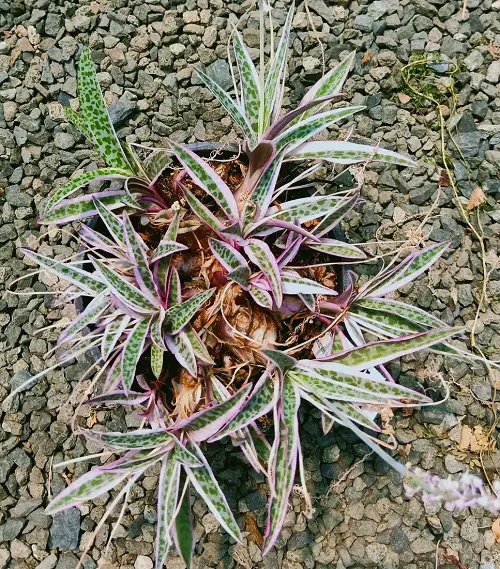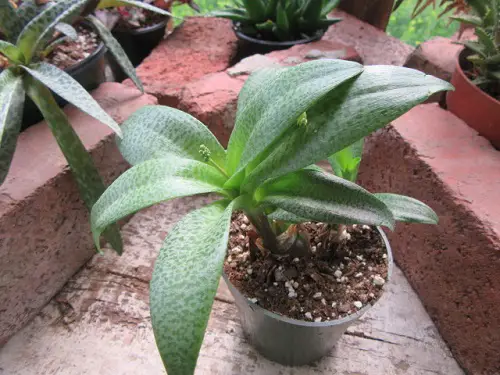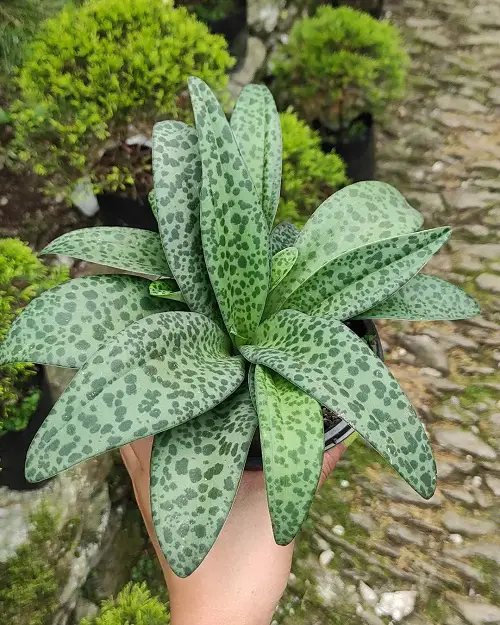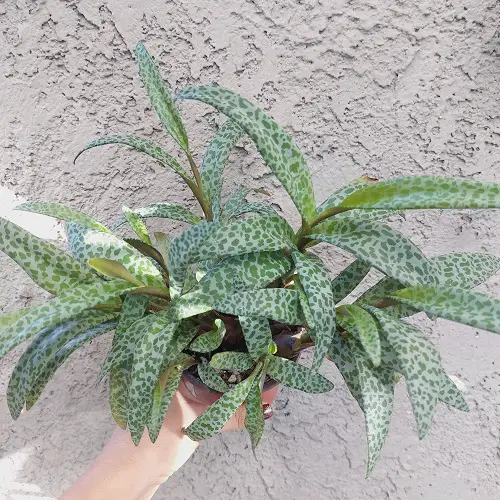Are you looking for a tough, hardy, and small houseplant? Here’s everything about How to Grow and Care for Silver Squill.

If you want an eye-catching and colorful plant that’s easy to grow and stays compact, then read to know How to Grow and Care for Silver Squill.
Botanical Name: Ledebouria socialis
Common Name: Silver squill, Wood hyacinth, Leopard lily
Here are the best silver satin pothos pictures
Silver Squill Plant Information
With lance-shaped, silvery leaves and green leopard spots, this houseplant looks amazing with purple undersides and silver spots. The teardrop-shaped bulbs that form on maturity make this plant more unique.
Silver Squill displays tiny, green blooms on pink-colored stems and rosette-shaped foliage. It can grow up to 6-10 inches tall and is best suited for places with limited space.
Silver Squill Varieties
These are the most commonly grown types of Silver Squill:
1. Ledebouria socialis ‘Juda’

This variety is most popular because of its variegated bright pink or light yellow striped leaves.
2. Ledebouria socialis ‘Violacea’

With silver leaves and dark green dots on the upperside, the cultivar looks distinct with violet on the underside.
3. Ledebouria socialis ‘Paucifolia’

The leaves are shorter than any other variety. They are silvery white, marked with dark green spots.
4. Ledebouria socialis ‘Minor’

This is a dwarf variety with a fast growth rate reaching 12-15 cm. The type belongs to the Asparagaceae family, and the bulbs are known to multiply fast.
Check out the best silver leaf houseplants here
Silver Squill Plant Propagation
It is possible to grow Silver Squill via seeds, but the germination rate and process can be extremely slow and inconsistent. Therefore, it is best to propagate the plant via bulb clusters.
- Once the flowers fade away, gently remove the plant from its container or out of the garden bed.
- Use your fingers to break the bulbs carefully into individual sections and replant each part in the garden or container.
- If growing in containers, plant at most two bulbs in a 5-6 inches container.
- Water well and keep the pot where it gets dappled light.
Check out the best silver foliage plants for the garden here
Growing Requirements for Silver Squill

Light
This perennial plant requires bright but indirect sunlight for at least 3-4 hours daily. In its natural habitat, it is often found to be growing in partially shaded, closed evergreen woodland.
Water
Once established, the Silver Squill needs minimal watering as it is considered a drought-tolerant succulent. Make sure to allow the topsoil to dry before watering again.
Soil
Silver Squill grows best in sandy, humus-rich soil with a pH range between 6-8. It can also grow in rocky soil that is well-draining. Alternatively, you can also use potting mixes designed for cacti and succulents.
Temperature and Humidity
If growing Silver Squill indoors, usually room temperatures work well. Whenever growing this plant outdoors, the best is to provide temperatures of 60-75°F or 15-23°C. The African plant can tolerate temperatures down to 30°F or -1°C in winter.
Silver Squill likes low-average humidity in the range of 30-45 percent. Keep its pot on a tray filled with pebbles and water if your home has too much dry air.
Have a look at the best silver planters here
Silver Squill Care

Fertilizer
Apply a balanced 20-20-20 liquid fertilizer, diluted to half strength, once in 5-7 weeks during summer and spring. Avoid feeding the plant in colder months.
Pruning
There is not much pruning required for the Silver Squill other than getting rid of dead or yellow leaves. Cut off damaged, diseased, or decaying parts and remove plant debris to keep it healthy.
Pests and Plant Diseases
Usually, the plant is not heavily attacked by any pests, but mealybugs, spider mites, thrips, aphids, and scales can cause damage to the plant. Keep them at bay with an insecticidal soap solution.
Common diseases include leaf spots, powdery mildew, root rot, botrytis, and rust. Avoid overwatering and ensure it gets plenty of dappled light throughout the day.
Have a look at some stunning patterned houseplants here
Overwintering

Keep the container in a spot that enjoys bright but indirect sunlight for at least 4-5 hours daily. Water it minimally so that soil only partially dries out.
In places where the temperatures in winter drop below 30°F or -1°C, bring the plant indoors before the dangers of the frost hit.
Have a look at some great bronze leaf houseplants here
Re-potting Silver Squill Using Pups
Once the plant matures, it will produce ‘bulbous pups’ around the base, and you will soon find the pot full of them. At this stage, it will be a good idea to re-pot them in different containers to have new plants.
Gently cut away the bulbs from the main plant using shear, and plant them in pots filled with well-draining soil. Water well, keep in indirect light, and soon you will have thriving new plants!


